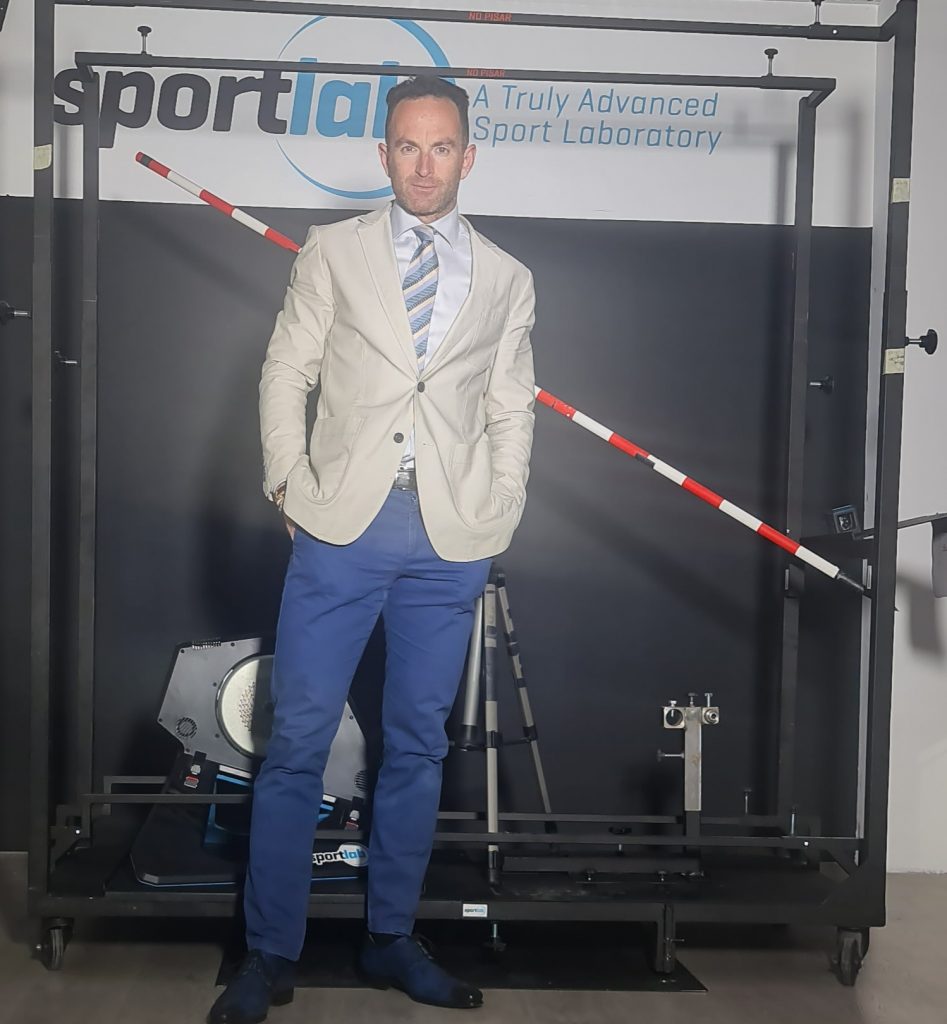ESP:
Cuando se llevan a cabo cualquier tipo de mediciones, está claro que hay que contemplar el error humano como variable: la no escrupulosidad en la toma de medidas, la interpretación de las lecturas o, lo que es peor, la anteposición de criterios subjetivos a la objetividad del resultado obtenido por métodos científicos que minimizan el margen de error.
El resultado científico nos demuestra que la percepción humana induce a error. Allí donde pensábamos que iba a ser blanco, resulta ser negro. La experiencia previa, la falta de actualización en la formación o la sobrevaloración de las capacidades propias suele arrojar como resultado la aproximación, pero no la certeza.
En nuestra tarea diaria, es común el que, después de haber analizado a cientos de deportistas, cuando vemos a un nuevo cliente sentado (por ejemplo) en su bicicleta y antes de cualquier intervención por nuestra parte, para nosotros pensemos: “sillín alto o sillín bajo”. Sólo nuestra prudencia nos salva del error. Puede ocurrir que nuestro análisis previo nos haga pensar en dónde está el acierto por comparación con otros casos similares. Sin embargo, tras llevar a cabo las pruebas pertinentes, vemos que los cambios a realizar en la bicicleta para adaptarla a las necesidades específicas del ciclista son los contrarios a los que creíamos como buenos.
Esto ocurre porque cada ciclista es único. El método SPORT LAB “hace hablar al ciclista”. Sus cualidades intrínsecas le hacen ser diferentes de todos los ciclistas del mundo que midan igual que él, que pesen igual que él o que desarrollen la misma potencia que él. Su composición muscular, elasticidad, estado de sus articulaciones y otra serie de factores condicionarán el resultado hasta a unicidad. Nadie tendrá las mismas medidas que el sujeto, ni siquiera él mismo. Llevado al extremo, su cambio de hábitos de vida, deportivos, en su peso, fuerza, resistencia, etc. podrían alterar sus medidas idóneas sobre la bicicleta.
Imaginad que nuestro ciclista es un ciclista ocasional, pesa 90 kilos, tiene un porcentaje de grasa en su cuerpo elevado, sus hábitos de vida y alimenticios no son los ideales y monta en bicicleta 20 veces al año. Ahora imaginad que su férrea voluntad le lleva a multiplicar por 10 sus salidas anuales en bici, a rebajar su peso en 30 kilos, a comer, descansar, vivir y disfrutar como un ciclista avanzado y, como consecuencia, arroja el doble de potencia en la bicicleta que hace un año. Además, su interés en la competición despierta y se plantea metas más ambiciosas. Su posición idónea en la bici es ahora diferente.
Esta es una ejemplificación extremista para dejar patente que ese ciclista ha cambiado sus circunstancias y precisa de “una bici diferente” a la de hace un año. Hasta ese punto es preciso el método SPORT LAB. Este grado de precisión no se puede alcanzar a través del análisis humano condicionado. Nadie, repito, nadie puede intuir, adivinar, deducir o dictaminar la posición del ciclista basándose en su intuición, experiencia previa o por muchos miles de ciclistas que haya visto su ojos.
La intervención humana sólo es válida para interpretar los datos que el método arroja y, si puede, para crear el método, pero no para determinar lo que el sujeto necesita sin basarse en un análisis previo no contaminado por estructuras rígidas o patrones de conocimiento relativo.
Por este motivo, en SPORT LAB, uno de nuestros pilares básicos es la investigación y el desarrollo tecnológico, pero de verdad. Alejándonos de sistemas comerciales y desarrollando sólo herramientas realmente avanzadas para dar respuestas definitivas a vuestros problemas.
¡Bienvenido!

ENG:
When any kind of measurement is carried out, you must count on the human factor variable: the lack of meticulousness when collecting data, the reading interpretation or, what is even worst, putting your subjective criteria before the objectivity of the result of scientific methods that minimize error margins.
The scientific result demonstrates us that the human perception induces to error. There where we thought it would be white, it turns out to be black. Previous experiences, the lack of information update or the overvaluation of self-capacities usually shows as a result the approximation, but not the certainness.
In our daily work, it is common that, after having analyzed hundreds of cyclists, when we watch at a new customer sat on his bike and prior to any intervention from us, we think for ourselves: “high or low seat”. Only our caution saves us from error. It might happen that our previous analysis makes us think where is the right move by comparison with similar cases. Nevertheless, after carrying out the appropriate tests, we check that the changes to be applied to the bike to fit it to the cyclist specific necessities are right the opposite to the ones we considered as good.
It happens because every cyclist is unique. The Sport Lab method “makes the cyclist speaking”. His/her intrinsic qualities make him/her to be different from any other in the world with the same height, weight or power output. His muscular composition, elasticity, joints condition and many other factors will condition the result until the uniqueness. Nobody will have the same bike fitting, not even himself. Taking it to the extreme, changes in his life or sport habits, weight, strength, endurance, etc. could change his idyllic bike fitting.
Imagine our cyclist as an occasional one, 90 kg. weight, a high fat percentage in his body, non-healthy life nor eating habits and that he rides his bike twenty times a year. Now, imagine that his iron willingness make him multiply by ten his rides, to drop 30 kg., eat, rest, live and enjoy as an avid cyclist and that ,as a consequence, he doubles the power on the bike in one year term. Additionally, his interest on racing wakes up inside him/her and considers more ambitious goals. His perfect position on the bike is now different.
This is an extreme exemplification to make clear that this cyclist has changed his circumstances and needs a “different bike” from the one he needed a year ago. The Sport Lab system is that accurate. That precision level cannot be reached through a conditioned human analysis. Nobody, I repeat, nobody can guess, sense, deduce or dictate the rider position based on your intuition or previous experience, no matter how many cyclist your eye saw.
Human intervention is only valid to understand the data the system shows and, if able, to create the method, but not to determine what the subject needs without a previous non contaminated for rigid structures of relative knowledge study.
Welcome!

GRANADA | PEDRO MUÑOZ – CIUDAD REAL | TENERIFE – ISLAS CANARIAS | LIMA – PERÚ | GROSSETO – ITALIA
BIOMECHANICS|TRANING|PHYSIOLOGY|GENETIC|NUTRITION
SPORTLAB.ES
“A TRULY ADVANCED SPORT LABORATY”


























